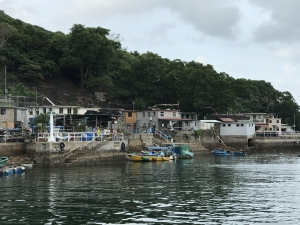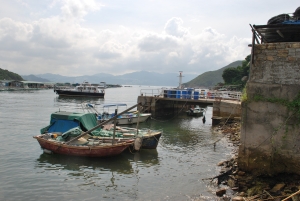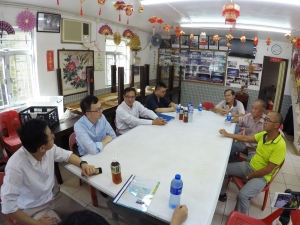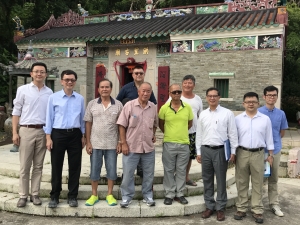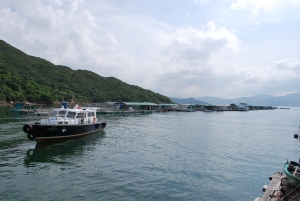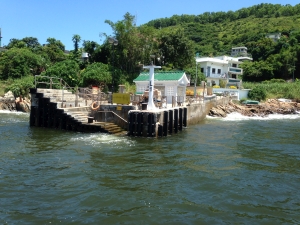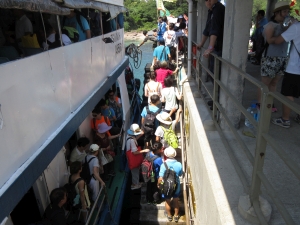Improve public piers to make them more convenient for tourists and residents alike
|
During holidays, many people like to visit countryside to get away from the hustle and bustle of the city. Hong Kong is home to the world-famous Geopark, marine parks, historical heritage, eco-tourism attractions, etc. which are extremely popular among tourists. However, many of these attractions are located in remote areas without road linkage and are only accessible by sea. This year, the Government formulated the Pier Improvement Programme (PIP). The first phase covers about 10 public piers in the New Territories and on the outlying islands. We wish to enhance their structural safety and improve the existing facilities as soon as possible, facilitate the public to visit the attractions, and meet the basic operational needs of villagers and fishermen. At present, there are more than 100 public piers in Hong Kong. Although the Government has been carrying out regular inspection and maintenance to safeguard the structural safety of these piers, some of them need urgent improvement due to the inevitable ageing problems resulting from years of usage and exposure to the elements, or due to their inadequacy to meet the current operational needs. Meet the needs of villagers and fishermen and enrich green tourism on the sea Recently, the Under Secretary for Development (USDEV), Mr LIU Chun-san, has visited the Kau Sai Village Pier in Sai Kung. As there is only one primitive berth and the water is only about one-metre deep at low tide, which make it difficult for many boats to berth and cause inconvenience to villagers, fishermen, visitors and tourists, it is necessary to carry out improvement works. Near the Kau Sai Village Pier is the historic Hung Shing Temple, a declared monument in Hong Kong. The restoration project of the temple was awarded an “Outstanding Project” in the United Nations Educational, Scientific and Cultural Organization Asia-Pacific Heritage 2000 Awards. During the visit, the USDEV talked with the villagers and learned that more than 1,000 people, including the descendants of fishermen who have moved abroad, participate in the major festivities held during the Hung Shing Festival each year. Therefore, the pier has to cope with an extremely large number of passengers during the festival. In addition, we believe that there is potential to develop green tourism at Kau Sai Village, which is located within the Sai Kung volcanic rock region of the Hong Kong Geopark. In recent years, there are also green tours on the sea connecting the various attractions near Kau Sai Village such as Sharp Island, Jin Island and High Island. We, therefore, have to expedite the pier improvement works so as to facilitate the public and tourists to visit the above attractions, learn more about the history and culture of Hong Kong and enjoy the spectacular natural scenery. Enhance accessibility to remote attractions Another pier improvement project proposed in the first phase is the Lai Chi Wo Pier in North District. Lai Chi Wo is located in the Hong Kong Geopark and the Yan Chau Tong Marine Park. At its heart is a 300-year-old Hakka walled village. Lai Chi Wo is now taking part in the Agricultural Land Rehabilitation Scheme, which aims to let tourists experience the culture of a Hakka walled village. Tourists may also visit the Lai Chi Wo Geoheritage Centre to learn about the city’s varied geological features and enjoy the beautiful scenery of Lai Chi Wo. However, people who travel overland to Lai Chi Wo have to take a long hike over hilly terrain from Wu Kau Tang or Luk Keng. Although kaito ferry services are available in Lai Chi Wo, the existing pier has only one primitive berth with inadequate draft for berthing at low tide. Also, owing to the relatively narrow access at the pier, it is necessary to carry out improvement works. Launch the first phase of the PIP The Development Bureau has set up a Committee on Piers to scrutinise the existing public piers in remote areas, considering factors such as public safety, accessibility to nearby outing destinations and natural and heritage scenic attractions, local sentiment, pier utilisation and techical feasibility. It has preliminarily determined that the first phase of the PIP will focus on 10 public piers in the New Territories and on the outlying islands. To commence the works as soon as possible, after consultation with the local community and the stakeholders in the middle of this year, we are now inviting tenders for engaging consultants to conduct technical studies on the proposed pier projects in the first phase by batches. Hopefully, the first phase of the PIP will be completed at an early date for the benefit of the public. Pier projects in the first phase of the PIP:
Relevant information: Travel magazine Lonely Planet in 2016 named Hong Kong the fifth-best spot (out of ten) to visit in Asia, highlighting the unique characteristics of Lai Chi Wo:
|
|
13 August, 2017
Back